The first boom of vending machines Moscow experienced in the 1960s. Then there was a unique automatic store "Progress" in Malaya Dmitrovka, in the hall of which there were no sellers, and in separate retailers located throughout the city, for a trifle or tokens it was possible to buy not only a glass of soda or a newspaper, but also hot coffee, Cigarettes, sandwiches, beer and wine. The founder of the museum of Soviet slot machines Alexander Vugman told how the Soviet vending originated and why.
Khrushchev's visit to the US
The first in the USSR appeared not game, but vending machines. I met mention of the imported vehicles that were installed in Moscow for the festival of youth and students in 1957, but I can definitely say that massively promoting our production and placement of steel after Khrushchev's trip to America in September 1959.
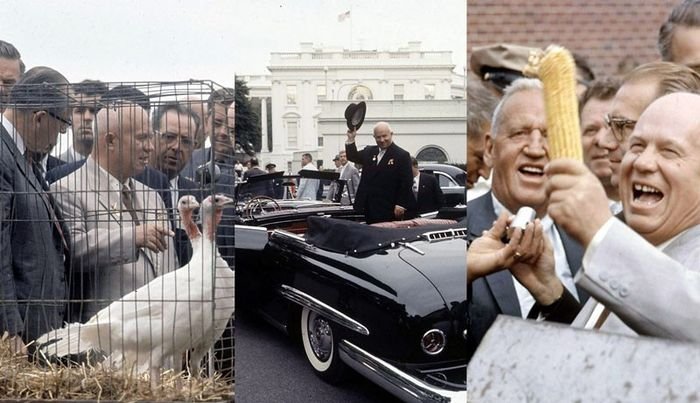
From what he saw then in the States, he was impressed not only by the prospect of using corn in agriculture, but also by the phenomenon of trade automation, which he observed everywhere and decided to move to the USSR. That is why in the late 1950s - early 1960s, we started issuing vending machines in our country.
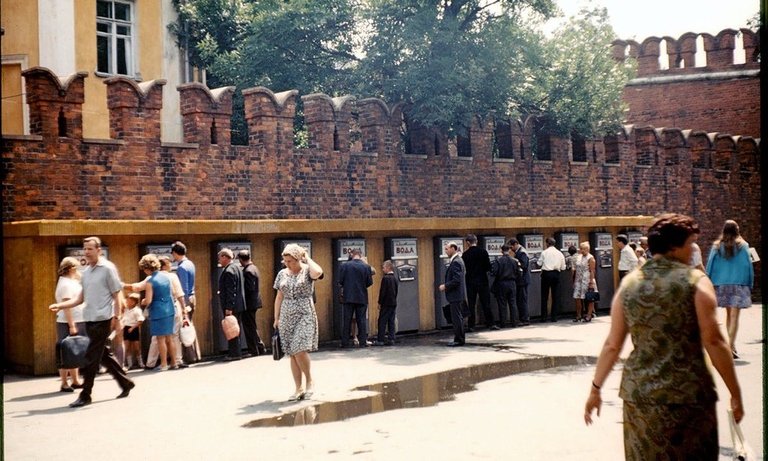
For the most part, they were manufactured in the Ukrainian SSR - it was there that Khrushchev gave their production. So in the Soviet years there were more trade machines in Ukraine than in the RSFSR.
No electronics
The simplest was an automatic machine selling newspapers, which was placed at all stations and bus stations, and then in the subway. He is interesting because he was completely mechanical and did not have any electronic stuffing.
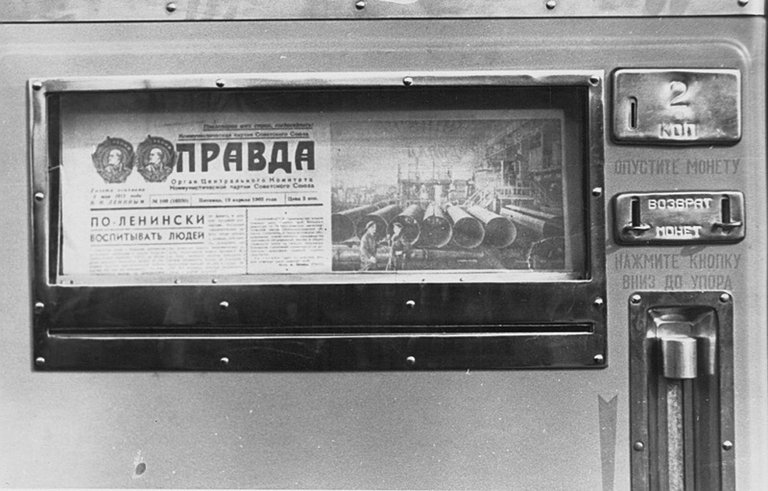
The coin pressed the lever that unlocked the main mechanism, and by pressing the handle, you could feed yourself a thin newspaper with a spring device. A modern multipage edition of the type "Arguments and Facts" would not fit there. Later, similar devices with electric filling appeared.
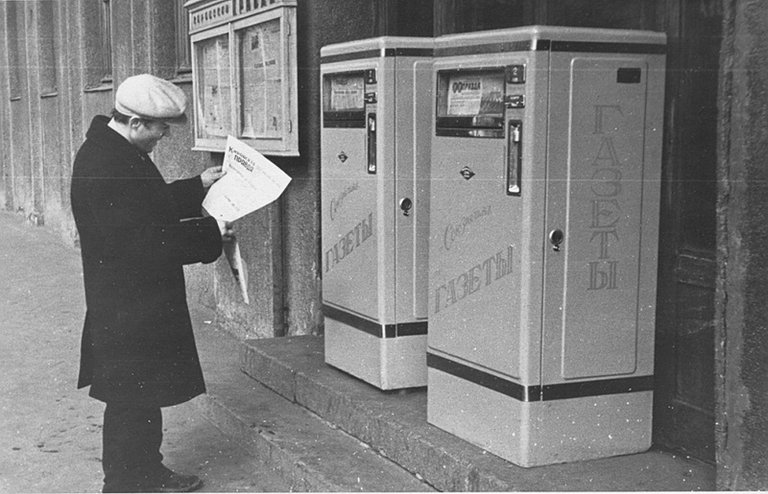
In the same years there appeared the most probably automata in the USSR selling carbonated water (with and without syrup), which in Moscow seemed to stand at every step. It was they who stayed longer in Moscow than others and worked actively in the 1980s, according to various sources, there were from 2000 to 2800 such cars in the city.
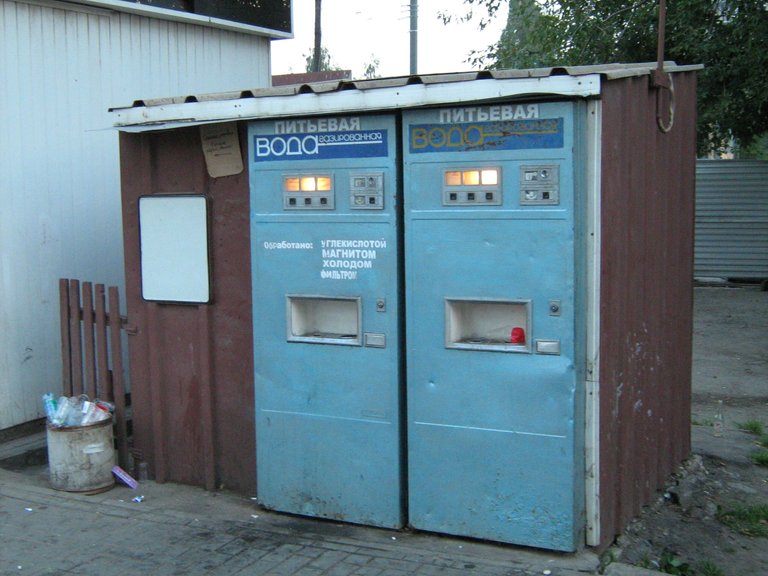
The shop-machine
In the 1960s and 1970s, vending machines in Moscow and other major cities had an unthinkable amount and it seemed that at the highest level, the prospect of moving to them in the future was completely abandoned, abandoning the live sellers ..
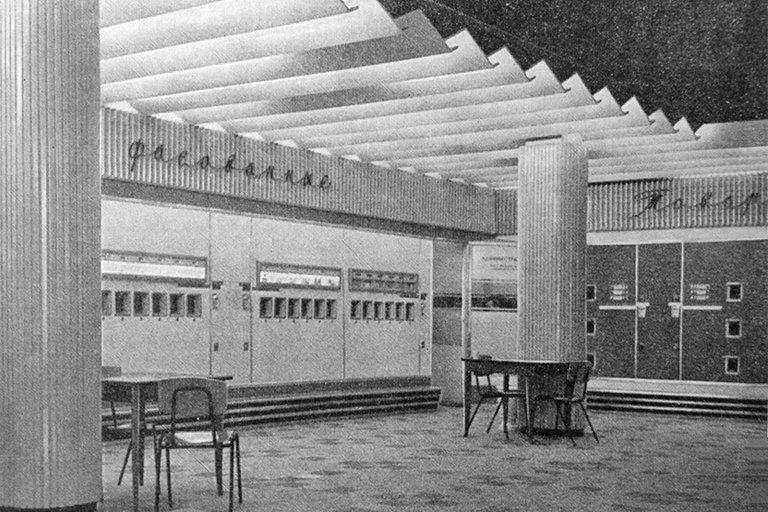
Shop "Progress".
In the 1960s, there was even a unique Progress store in Moscow at Malaya Dmitrovka (then called Chekhov Street), where there were no sellers at all, and in the apparatus it was possible to buy Mozhaysk milk in bottles, condensed milk in bottles Cans, packaged butter, curds, rolls and much more.
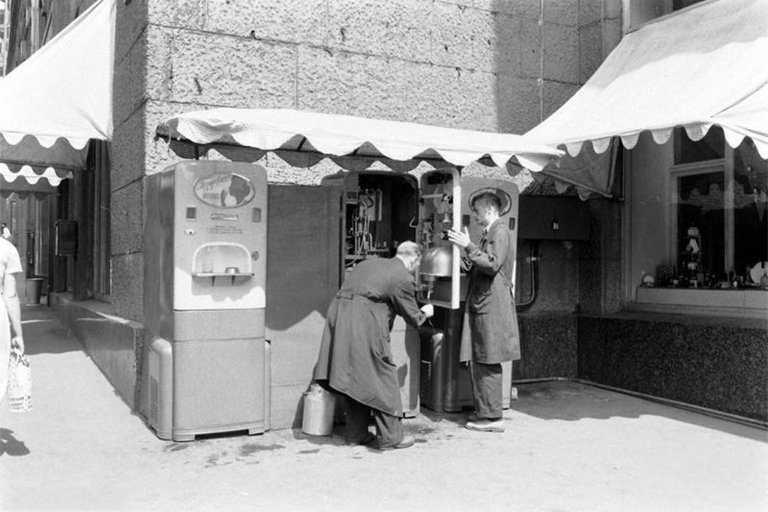
Separate machines presented there, selling sandwiches with cheese and sausage for example, could be found at airports, sunflower oil machines - in large progressive department stores and conventional grocery stores.
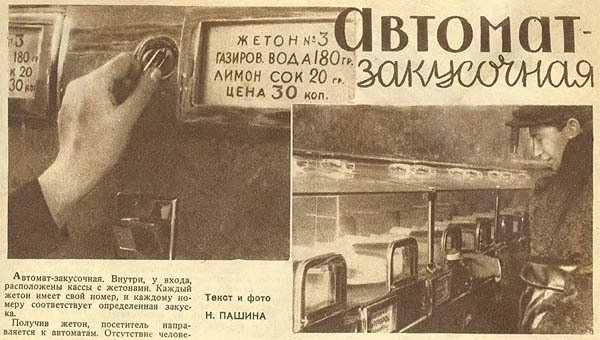
In Moscow in the 1960s and 1970s, you could see on the streets, in beer shops and shops, apparatus for selling kvass, juices, beer and even wine, milk and ice cream, kerosene and cigarettes, hot tea and coffee, cigarettes, matches, pencils and notebooks. At the entrance to the subway were machines for exchange of coins, at stations and large stations - for ticket sales.

Badminton for a vending machine with wine.
Apparatus for the sale of beer and wine most often worked from tokens, which had to be bought from the cashier of a cafe or a pub, where they were installed. Tokens, as a rule, were made of yellow alloy, in diameter a little less than a nickel, with the inscription "Ministry of Trade of the USSR" on one side and one or two troughs-slots on the other.
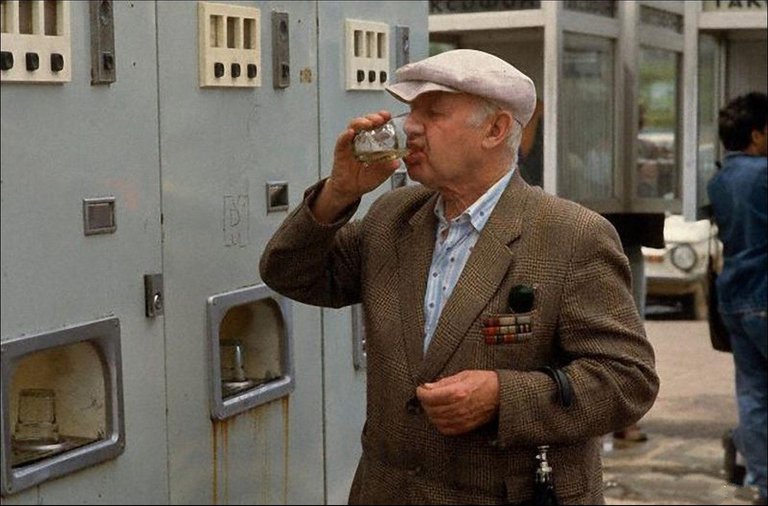
Construction Costs
The vending machines for the sale of beer and kvass were of the same type and were carried out in such a way that they could give out two kinds of beverage into two niches. In practice, they charged one, and there was no choice.
Such devices did not become popular and widespread, for the reason that they required regular washing of the entire system, and this is very troublesome. In addition, they were demanding on the installation site: most often they were placed in closed rooms with specially allocated niches, as these machines did not have side and rear walls.

And in general, the need to regularly bring containers with a fresh drink, pour it, if it was not sold, until the expiration date has expired, made such devices not the most cost-effective.
And as a result, by the beginning of the 1980s a unique and experimental "Progress" was closed, and most of the Soviet vending machines were dismantled and taken away, leaving machines for selling sodas and newspapers.
Eau de cologne and music
In the old pictures and in the movie "Change" you can see the device with a built-in mirror, which for 15 kopecks sprayed your hair and face with three grams of cologne. They were hung in restaurants, shops and hotels, sometimes - next to hairdressers.
The machine is both beautiful and useful, but, unfortunately, it was often put out of action. His weak spot was a sprayer located at the top, made in the form of a flower, which often broke off the first week after installation.

Musical devices, or jucoboks, as they are called today, were installed in restaurants. In 1960-1970 in the USSR it was possible to meet basically the Meloman model produced by the Polish company Unitra Fonica. There is an opinion that this is how the word "music fan" penetrated into the Russian language and was fixed in it forever.
These Polish juggles can be seen in Soviet films: "100 grams for courage", "The only". And still there is a story about "Yeralash" dedicated to Soviet commercial vehicles, "I've been knocked out", where the principle of "Meloman's" work is shown in detail, which for 5 kopecks lost a record with the chosen composition.

That is quite interesting